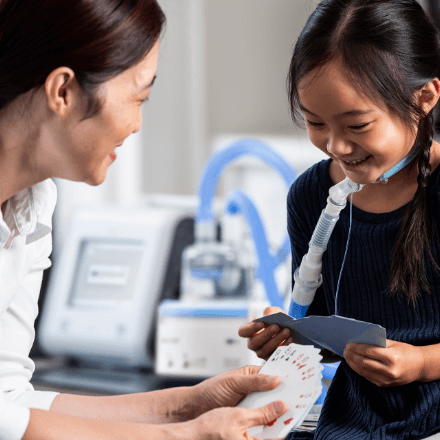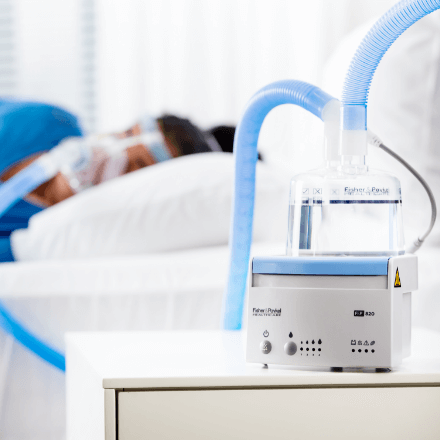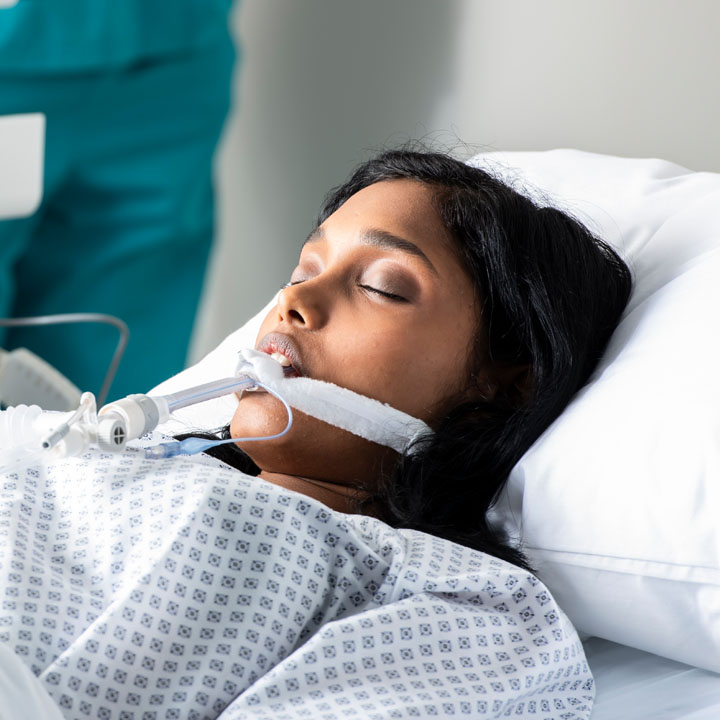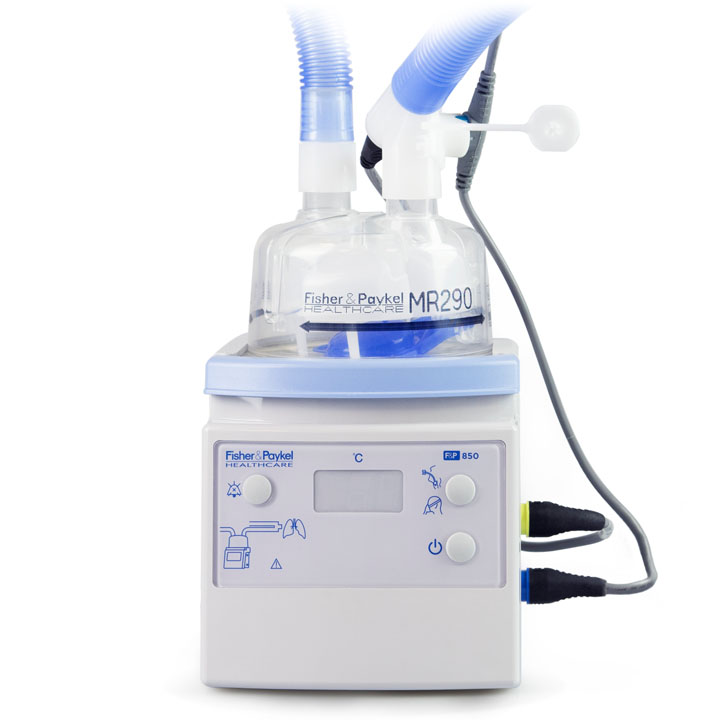Single-limb tracheostomy setup (passive port)
A. Humidification Chamber B. Breathing Tube C. Humidifier Base D. Ventilator or other flow source

F&P 820 System for invasive ventilation
A tracheostomy tube bypasses the body's natural ability to humidify and clean its airway and inhibits a patient's protection reflexes, such as coughing, gagging and sneezing.1 Failure to heat and humidify inspired gases for patients with bypassed airways can increase the risk of complications, which include drying of the airway, airway obstruction, bronchoconstriction and artificial airway tube occlusion.2
A bypassed airway can prevent the mucus layer from trapping potentially dangerous particles and pathogens before they reach the lungs. Therefore, humidification and as-needed suctioning have a vital role in managing secretions for mechanically ventilated patients.3

F&P 820 System for noninvasive ventilation (NIV)
The gas leak, high flow rates, and unidirectional flow of noninvasive ventilation can dry the mucosa in the nose and mouth.[4–6] This drying can disrupt the mucociliary transport system – a self-clearing defense mechanism in our airways. Upper airway dryness and discomfort are often reported when respiratory gases do not contain adequate levels of heat and humidity during noninvasive respiratory support. Discomfort can impact a patient’s ability to comply with the required therapy, which can affect therapy outcomes. Adding heated humidification provides warmth and moisture to inspired gases, which may make NIV therapy more comfortable, and support patient tolerance.[7]

Optiflow Nasal High Flow
Proven to be superior to conventional oxygen therapy (COT),2 NHF provides a number of benefits, including washout of dead space,3 maintenance of nasal mucosa and enhanced mucociliary function.4
The F&P 820 System can deliver nasal high flow from 5-70 L/min on setting three and between 5-40 L/min on setting four. Learn more about Optiflow nasal high flow


